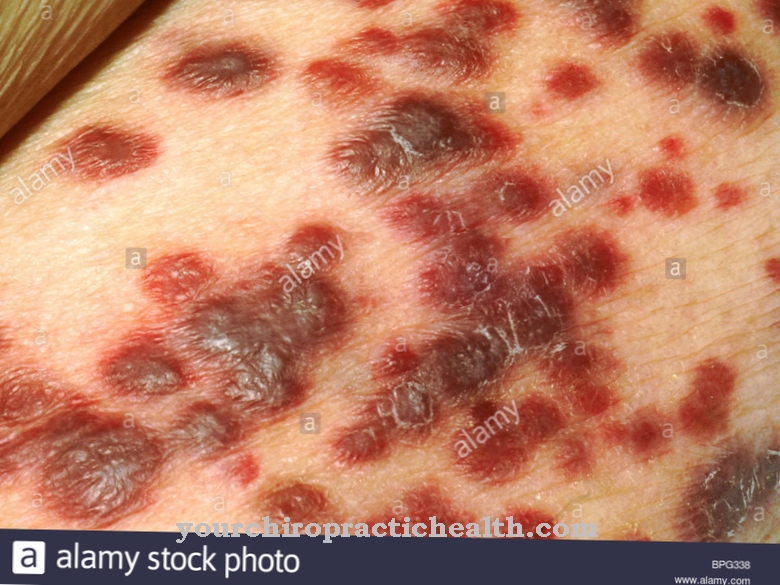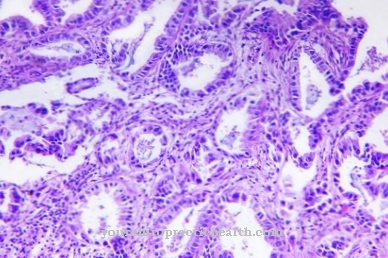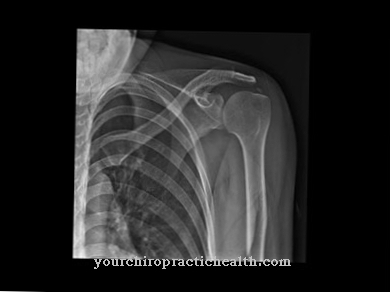The Human herpes virus 8 (HHV 8) is a virus in the Herpesviridae family. It belongs to the subgroup of gamma herpes viruses. It was discovered in 1994 by virologist Patrick S. Moore and his wife Yuan Chang at Coulumbia University in New York. In addition to Kaposi's sarcoma, human herpes virus 8 also causes rare malignant lymphomas.
What is Human Herpes Virus 8?
The human herpesvirus 8 belongs to the order of the Herpesvirales, to the family of the Herpesviridae, to the subfamily of the Gammaherpesvirinae and to the genus of the Rhadinoviruses. The human herpes virus 8 is the only known human rhadinovirus to date. It triggers Kaposi's sarcoma and rare malignant lymphomas.
Occurrence, Distribution & Properties
The history of the virus' discovery includes the fact that it had been noticed since the 1980s that certain malignant diseases were more common among people with AIDS. This was particularly noticeable in Kaposi's sarcoma, which was an extremely rare skin tumor before the HIV pandemic.
It was also noticeable that Kaposi's sarcoma occurred more frequently in male than female AIDS sufferers. From this observation, the assumption could be made that Kaposi's sarcoma must have an infectious cause. Furthermore, the hypothesis could be made that the pathogen can be transmitted through sex, can spread through the immunodeficiency caused by HIV and can ultimately trigger Kaposi's sarcoma. This hypothesis was tested by the scientists Moore and Chang. When checking the DNA sections found in the viruses, it became clear that the virus was hitherto undiscovered.
This human herpes virus occurs only rarely in comparison to the high infection rates of the other human herpes viruses. In North America and Europe, 1-3% of the population have antibodies to HHV-8. In Equatorial Africa, however, the rate is around 50%. The seroprevalence of other human herpes viruses, on the other hand, is well over 50% worldwide. The detection is carried out serologically via the detection of the presence of antibodies against the virus.
The virus is transmitted via saliva and other body fluids. A distinction is made between sexual and asexual transmission routes. Oro-genital, oro-anal and oro-oral transmission are possible in the case of sexual infection routes. The herpes virus can be transmitted asexually through contact with saliva. The transmission or infection thus takes place in the same way as with other human herpes viruses.
Illnesses & ailments
The human herpes virus 8 triggers Kaposi's sarcoma and can also lead to rare malignant lymphomas. Certain forms of Castleman's disease can also be triggered by the human herpes virus 8.
The diseases mentioned do not occur in everyone infected with HHV-8. It is only likely to occur if certain cofactors (e.g. immunodeficiency) are present.
Kaposi's sarcoma is a cancer of the (mucous) skin that occurs mainly in people with AIDS. The presence of the human herpes virus 8 and cofactors (including immunodeficiency) are probably necessary for the development. Furthermore, the cofactors probably include environmental factors as well as oxidative and nitrosative stress.
The symptoms of the disease consist in the appearance of brownish-bluish tumor nodules on the mucous membranes and in the intestine, and in AIDS patients usually also on the skin. Men are generally more often affected than women.
The disease is often chronic. It is possible that metastases can occur in different organs and / or the lymph nodes. Direct involvement of the lymph nodes is also rarely possible.
There is also an increased risk of illness after organ transplants, as immunosuppressive drugs are used in this case. The most important thing in the treatment of Kaposi's sarcoma is to keep the immune system functioning properly. For this reason, combination antiviral therapy is of the utmost importance in HIV and AIDS patients.
Various therapy methods such as the surgical removal of the affected tissue, radiation therapy, physical therapy and laser therapy are also used. Chemotherapy is also used to treat Kaposi's sarcoma. In addition, experimental therapies are available, but their mode of action is more unpredictable than with long-known forms of therapy.
Together with the following viruses, the human herpes virus 8 forms the group of human cancerogenic viruses: hepatitis B virus, hepatitis C virus, human papillomavirus, Epstein-Barr virus, human T-lymphotropic virus 1. These viruses can cause cancer in humans and are responsible for around 10 to 15% of all cancers worldwide.
It is noticeable that HHV-8 contains many genes that are very similar to the genes of human cells. This homology can influence the behavior of human cells in complex ways. It is very likely that this is the cause of the carcinogenicity.








.jpg)





.jpg)






.jpg)






